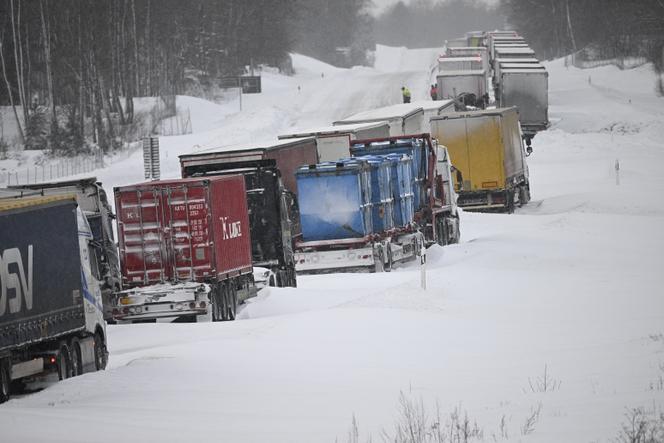

LETTER FROM MALMÖ

On Wednesday, January 3, in Skåne, southern Sweden, snow began to fall during the night. The Swedish meteorological institute SMHI had issued an orange alert for the whole region. Residents were advised to stay at home. At 10:38 am, police received their first alert: Trucks were stuck on the E22 route near Hörby, some 50 kilometers northeast of Malmö. A traffic jam began to form.
This was the starting point for what was to become, in the space of a few hours, the "snowy chaos of E22." The incident was more than embarrassing for Sweden, not only bringing to light the total lack of coordination between the country's government agencies but also revealing the inability of an administration to deal with an emergency situation. This was all the more striking given that, at the beginning of January, Swedes were asked to prepare for the eventuality of war.
That morning, it took 40 minutes for the police to arrive on the scene and over two hours for the Swedish Transport Administration (Trafikverket) to decide to close the E22. A thousand vehicles were trapped over a distance of 30 kilometers. Hours went by. The snow continued to fall. Those near a roadside restaurant took refuge there.
Finally, at 6:30 pm, a coordination meeting was organized among the different services involved. The army was called in for reinforcement, arriving at 11 pm. The safety barrier between the two lanes was then cut to free the cars. However, the operation took time. Some spent the night in their vehicles. Eventually, at 11:30 am on January 4, the evacuation was completed. Yet, it would be almost another 24 hours before traffic could resume.
Controversy was already heating up, with one question coming up again and again: Why did it take the authorities so long to react? Trafikverket's communications manager, Bengt Olsson, first blamed the weather, then accused foreign trucks of not being equipped for snow – information later denied – before blaming motorists who tried to force through the roadblocks, another claim subsequently refuted.
A few days later, the media published extracts from exchanges between various groups on-site, revealing total confusion. At 1 pm on January 4, for instance, the police were still asking for "someone to take charge of operations and set priorities." The day before, the army was already complaining that it didn't know what to do: "We can't just go down and work at random," said one official.
Everyone then provided their own analysis, and while opinions differed on the precise interpretation of the incident, all seemed to agree that it was "a symbol of Sweden" today, as P. M. Nilsson wrote in the newspaper Expressen on January 5. A former editorial writer for the business daily Dagens Industri, Nilsson long championed closer ties between the right and the far right, before briefly serving as Prime Minister Ulf Kristersson's chief of staff. He now heads the liberal think-tank Timbro.
You have 45% of this article left to read. The rest is for subscribers only.
